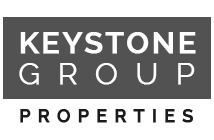90 Percent of Foreclosures are Wrongful
Call Bob Cumming of Keystone Group Properties at 310-496-8122 for information about Southern California luxury homes in Los Angeles County, exclusive Orange County CA homes and beach/coastal homes in San Diego County. Serving buyers and sellers of Southern California coastal real estate as well as Beverly Hills, Beverly Glen, and Bel Air, Keystone Group Properties offers excellent services and professional expertise to discriminating clients in Southern California.
90 Percent of Foreclosures are Wrongful!
A wrongful foreclosure action typically occurs when the lender starts a non-judicial foreclosure action when it simply has no legal cause. This is even more evident now since California passed the Foreclosure prevention act of 2008 SB 1194 codified in Civil Code 2923.5 and 2923.6. In 2009 it is the opinion of some attorneys in California that 90% of all foreclosures are wrongful in that the lender does not Compliance would cost hundreds of millions in staff, paperwork, and workouts that they don’t deem to be in their best interest. The workout is not in their best interest because our tax dollars are guaranteeing the Banks that are Too Big to Fail’s debt. If they don’t foreclose and if they work it out the loss is on them.
There is no incentive to modify loan for the benefit of the consumer.
The banks are therefore incentivized to foreclosure without the mandated contacts with the borrower. But compliance with 2923.5 is not done. The Borrower is never told that he or she have the right to a meeting within 14 days of the contact. They do not get offers to avoid foreclosure. There are typically two short sale offers or a probationary mod that will be declined upon the 90th day.
Wrongful foreclosure actions are also brought when the service providers accept partial payments after initiation of the wrongful foreclosure process, and then continue on with the foreclosure process. These predatory lending strategies, as well as other forms of misleading homeowners, are illegal.
The borrower is the one that files a wrongful disclosure action with the court against the service provider, the holder of the note and if it is a non-judicial foreclosure, against the trustee complaining that there was an illegal, fraudulent or willfully oppressive sale of property under a power of sale contained in a mortgage or deed or court judicial proceeding. The borrower can also allege emotional distress and ask for punitive damages in a wrongful foreclosure action.
Causes of Action
Wrongful foreclosure actions may allege that the amount stated in the notice of default as due and owing is incorrect because of the following reasons:
- Incorrect interest rate adjustment
- Incorrect tax impound accounts
- Misapplied payments
- Forbearance agreement which was not adhered to by the servicer
- Unnecessary forced place insurance,
- Improper accounting for a confirmed chapter 11 or chapter 13 bankruptcy plan.
- Breach of contract
- Intentional infliction of emotional distress
- Negligent infliction of emotional distress
- Unfair Business Practices
- Quiet title
- Wrongful foreclosure
- Tortuous violation of 2924 2923.5 and 2923.5 and 2932.5
Injunction
Any time prior to the foreclosure sale, a borrower can apply for an injunction with the intent of stopping the foreclosure sale until issues in the lawsuit are resolved. The wrongful foreclosure lawsuit can take anywhere from ten to twenty-four months. Generally, an injunction will only be issued by the court if the court determines that: (1) the borrower is entitled to the injunction; and (2) that if the injunction is not granted, the borrower will be subject to irreparable harm.
Damages Available to Borrower
Damages available to a borrower in a wrongful foreclosure action include: compensation for the detriment caused, which are measured by the value of the property, emotional distress and punitive damages if there is evidence that the servicer or trustee committed fraud, oppression or malice in its wrongful conduct. If the borrower’s allegations are true and correct and the borrower wins the lawsuit, the servicer will have to undue or cancel the foreclosure sale, and pay the borrower’s legal bills.
Why Do Wrongful Foreclosures Occur?
Wrongful foreclosure cases occur usually because of a miscommunication between the lender and the borrower. Most borrowers don’t know who the real lender is. Servicing has changed on average three times. This has occurred with the MERS Mortgage Electronic Registration Systems and the “investor lender” hundreds of times since the origination. The servicers of record now have to contact the borrower. They don’t even know who the lender truly is. The laws that are now in place never contemplated the virtualization of the lending market. The present laws are inadequate to the challenge.
This is even more evident now since California passed the Foreclosure prevention act of 2008 SB 1194 codified in Civil Code 2923.5 and 2923.6. It is the opinion of some legal experts that 90% of all foreclosures are wrongful in that the lender does not comply. The lenders have taken a calculated risk.To comply would cost hundreds of millions in staff, paperwork, and workouts that they don’t deem to be in their best interest.
The workout is not in their best interest because our tax dollars are guaranteeing the Banks that are Too Big to Fail’s debt. If they don’t foreclose and if they work it out the loss is on them. There is no incentive to modify loan for the benefit of the consumer. This could be as a result of an incorrectly applied payment, an error in interest charges and completely inaccurate information communicated between the lender and borrower.
Some borrowers make the situation worse by ignoring their monthly statements and not promptly responding in writing to the lender’s communications. Many borrowers just assume that the lender will correct any inaccuracies or errors. Any one of these actions can quickly turn into a foreclosure action. Once an action is instituted, then the borrower will have to prove that it is wrongful or unwarranted. This is done by the borrower filing a wrongful foreclosure action. Costs are expensive and the action can take time to litigate.
Impact
The wrongful foreclosure will appear on the borrower’s credit report as a foreclosure, thereby ruining the borrower’s credit rating. Inaccurate delinquencies may also accompany the foreclosure on the credit report. After the foreclosure is found to be wrongful, the borrower must then petition to get the delinquencies and foreclosure off the credit report. This can take a long time and is emotionally distressing.
Wrongful foreclosure may also lead to the borrower losing their home and other assets if the borrower does not act quickly. This can have a devastating effect on a family that has been displaced out of their home.
The borrower may be entitled to compensation for their attorney fees, court costs, pain, suffering and emotional distress caused by the action once the borrower’s wrongful foreclosure action is successful in court.
To summarize, it is suggested the homeowner work with real estate attorneys who can help in a professional manner and are more apt to be successful in helping the homeowner.
Bel Air CA real estate for sale


